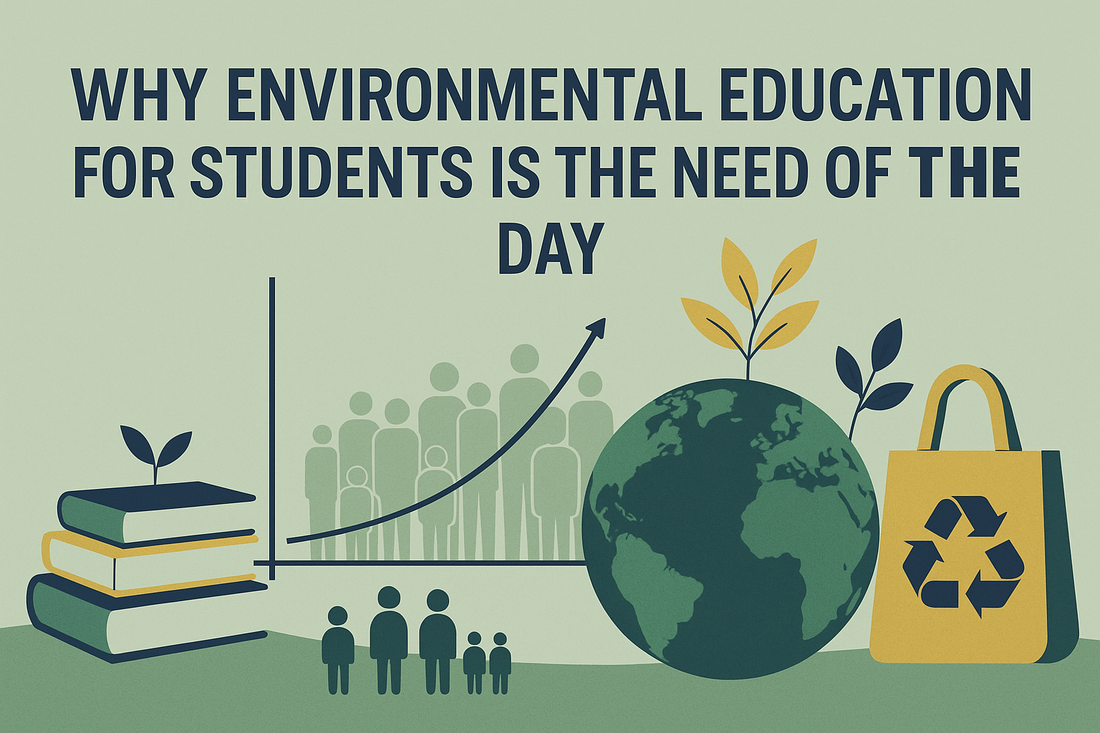
Why Environmental Education for Students Is the Need of the Day
Share
🌱 Why Environmental Education for Students Is the Need of the Day
As the global population continues to grow rapidly, our consumption of natural resources has become exponential. In the last decade alone, over 1.36 billion children were born. This population trend is not expected to slow down soon.
The chart below illustrates the explosive population growth and its link to increasing environmental pressure:
| Resource | Estimated "Run-Out" Timeline |
|---|---|
| Fossil Fuels | Several decades to over 100 years (with tech advances) |
| Phosphorus | Peak around 2030; depletion within 50–100 years |
| Freshwater | Scarcity in many regions within decades; stress by 2050 |
| Global Resources | Earth Overshoot Day trends predict depletion in 15–30 years |
Despite some governmental and institutional efforts, current action is not enough to reverse these environmental threats. We urgently need a generation that is aware, educated, and empowered to make sustainability a core part of decision-making.
👧👦 Rise of Young Entrepreneurs: A Window of Opportunity
Over the past decade, there has been a strong upward trend in youth entrepreneurship. More young people are starting businesses and taking on leadership roles, driven by access to technology, social consciousness, and a desire to make an impact.
| Region/Age Group | Key Metric |
|---|---|
| USA (ages 18–24) | ~24% are entrepreneurs; ~21% plan to start soon |
| UK (ages 18–29) | Entrepreneur participation rose from 5% to 13% |
| Gen Z (Globally) | ~36% identify as entrepreneurs, with high optimism |
This presents a powerful opportunity: If we integrate sustainability into school education, these young leaders can shape industries, policies, and communities that prioritize long-term environmental health.
🧃 The Packaging Problem: What Kids Are Consuming
Yet, many products marketed to young people remain unsustainable:
📦 Packaging Preferences Among Youth
-
Only 34% of young consumers (18–34) actively choose sustainable packaging—even when it’s less convenient (ALPLA survey).
-
48% said that unsustainable packaging is a deal-breaker—but 52% still purchase such products.
| Survey Context | % Using/Accepting Non-Eco Packaging |
|---|---|
| Willing to buy non-sustainable | ~66% |
| Don’t consider it a deal-breaker | ~52% |
This suggests that 50%–70% of products marketed to the youth still rely on non-eco-friendly materials and unsustainable production.
📚 The Role of Environmental Education
To create real, lasting change, environmental literacy must start early:
-
🌿 Schools should teach the environmental impact of everyday choices—like what materials make up their clothes, toys, or snacks.
-
🌍 Students must understand how resource use, packaging, and consumption patterns affect climate, ecosystems, and their future.
-
🧠 Education should empower students not just to reduce waste, but to innovate sustainable solutions—whether as scientists, engineers, or entrepreneurs.
🟢 Conclusion
Environmental education is no longer optional. It is the foundation for a responsible, resilient generation—one that not only understands the gravity of climate and resource challenges, but actively leads the way toward a sustainable future.
Let’s equip our children not just with knowledge—but with purpose.


